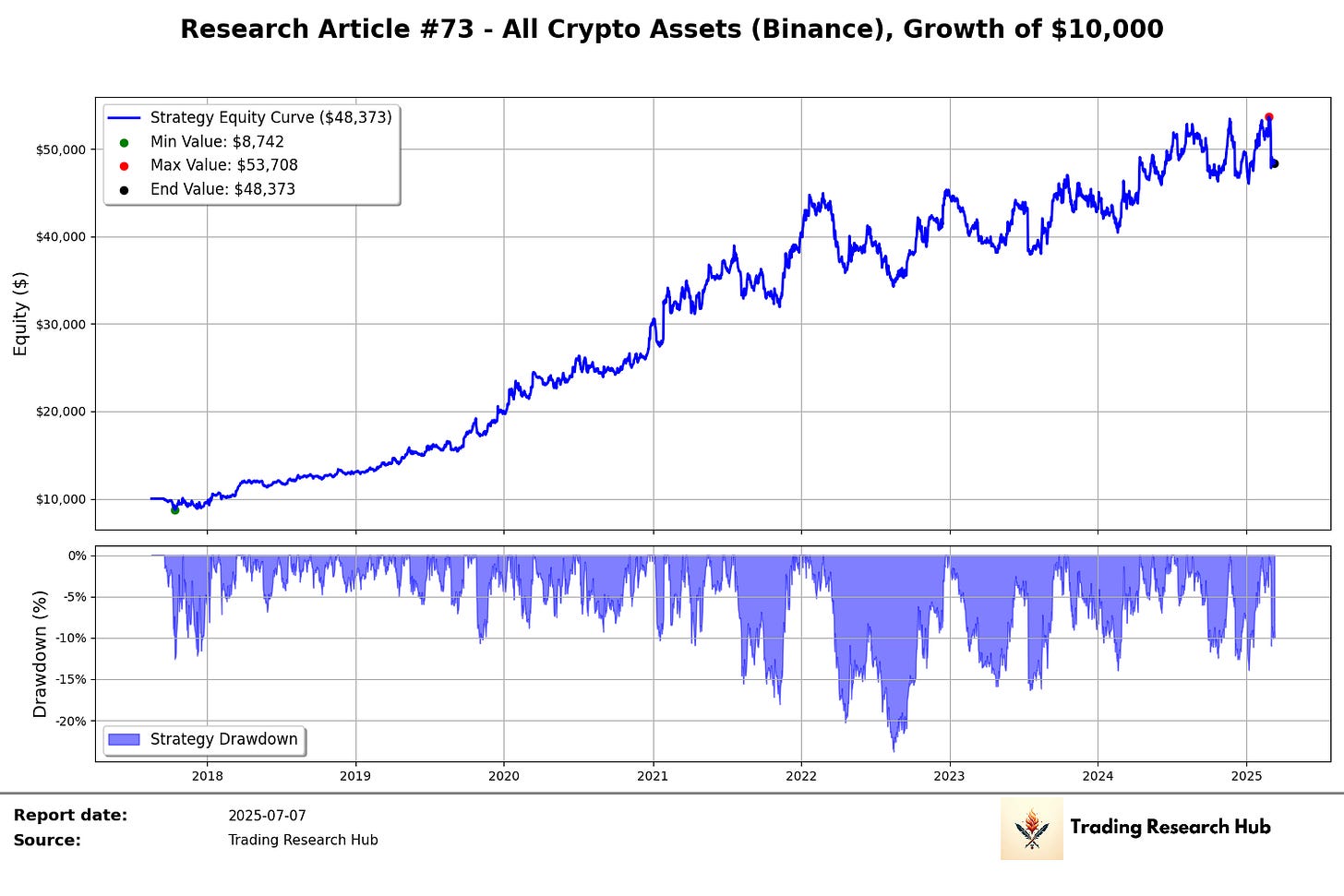A Delta-Neutral Cross-Sectional Momentum Strategy in Crypto - Research Article #73
A systematic framework to capture momentum returns while decreasing directional risk.
👋 Hey there, Pedma here! Welcome to the 🔒 exclusive subscriber edition 🔒 of Trading Research Hub’s Newsletter. Each week, I release a new research article with a trading strategy, its code, and much more.
If you’re not a subscriber, here’s what you missed this past month so far:
If you’re not yet a part of our community, subscribe to stay updated with these more of these posts, and to access all our content.
Imagine that you run a lemonade stand.
As a smart business owner, you consistently evaluate and monitor the risks associated with your business, and you try to be more effective at controlling for those risks.
After running your business for some time, you realize that on hot, sunny days, you get more lemonade sales, because people are more thirsty.
But on cold, rainy days, nobody buys, because everyone’s stuck at home and no one wants to be outside. This means that you lose money on inventory, employee costs, material wear, etc.
As anyone running a business, ideally you want steady profits, no matter what happens. So you start thinking how you could be better at decreasing costs, when sales are not as good, and increasing them, when you expect a lot of sales. The initial idea you have is to forecast the weather, and adjust your costs based on that model.
But you quickly realize that despite being a very good lemonade maker, you’re not that good at forecasting the weather, because let’s face it, it’s not really your business.
So you accept that you’re exposed to the weather, like a trader is exposed to directionality in markets (we’ll get there).
How do you approach this problem?
Well, you might want to offload (hedge) that risk somehow.
Let’s say that there’s an umbrella shop near you.
On hot days, you make money selling lemonade, and the umbrella seller loses money selling umbrellas. On rainy days, you lose money selling lemonade, but the umbrella shop makes money selling umbrellas.
So you agree to split profits.
When you sell more lemonade you share it with the umbrella guy, and when he sells more umbrellas, he gives you some.
Now you’ve balanced the risks of hot and cold days and don’t care what the weather does, you’ll make some money either way.
This is exactly what we’ll be discussing today.
How can we achieve this protection, so that I am not exposed to market direction (the weather), I am consistently balancing out exposures (so that the net outcome is neutral), but I can still profit from the underlying effect I am trying to harvest (like spikes in extreme weather).
By the end of today’s article, we achieve the historical results below, which I found to be quite interesting.
Let’s get into it!
What Does Delta-Neutral Mean?
A delta-neutral trading strategy essentially means being neutral to something. That’s it.
In this article that something will be the Crypto Market and Bitcoin’s directionality. But allow me to add the caveat that there’s a bunch of other things we could be delta-neutral to.
With a delta-neutral trading strategy we’re trying to have 0 net exposure to market’s direction. In options, delta measures the sensitivity to the underlying asset’s price. A delta-neutral position is one where those sensitivities cancel out.
In a portfolio context, being delta-neutral means that the total long positions and short positions are balanced, such that if the overall market index moves up, or down, the portfolio value is (ideally) unaffected.
In other words, the portfolio has a beta of zero to the market (beta being a measure of how much something moves with something else).
A beta of 1.0 means that the portfolio would rise 10% if the market index rises 10%, while a beta of 0 means the portfolio is not systematically moved by the market’s fluctuations.
Here’s what we’ve achieved with today’s strategy.
It won’t ever be a perfect beta of 0 because there’s rebalancing thresholds to avoid unnecessary costs and residual beta from other stuff we won’t go into detail today (a topic for another day).
But the idea is that we stick on average as close to 0 as possible to avoid that directionality.
In even simpler terms, being market-neutral makes the strategy’s performance independent of bull or bear markets, it just aims to make money whether market crashes or goes up.
The advantage of delta-neutral positioning is that any profit the strategy earns is due to picking the right winners and losers (skill), not because one had a lucky guess on the market’s direction. It mitigates market risk.
For example, if the entire crypto market fell 5% next week, a delta-neutral momentum portfolio might not lose 5% – it could even profit if the coins you shorted fell more than the ones you were long. Conversely, if the market jumps, the losses on the short positions might be offset by gains on the longs. This neutralization lets the strategy focus on capturing relative outperformance. Essentially, it’s trying to extract momentum return with minimal beta to the underlying market.
So you can see the appeal.
The thing is, like our lemonade example above, we have to pay our “umbrella seller" a portion of our profits, to be able to hedge out that market risk.
No protection ever comes for free!
Combining Cross-Sectional Momentum with Delta Neutrality
Cross-sectional momentum is an interesting strategy to implement with a long/short portfolio construction. By going long the top winners and short the bottom losers, we are already setting up a spread that can be easily done in a market neutral way.
But there’s a caveat that we must be aware of…







